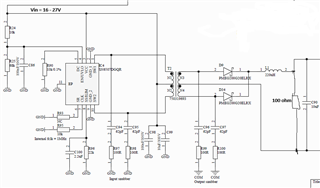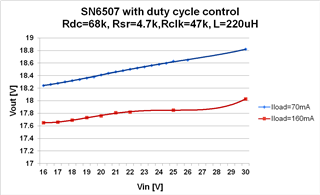Tool/software:
I can't start operation of the SN6507 with enabled duty cycle control.
Can you please provide the application schematic for SN6507 operating with Wide-Ranging Input voltages with Duty Cycle Control which includes names of all compnents? The best for me when it includes Transformer WE 750319693.
My application requirements: Vin min = 16V, Vin max = 27V, Vout = 27V, Iout = 0.2A. But any schematic that works would be helpful to me.
Thank you,
Darek




